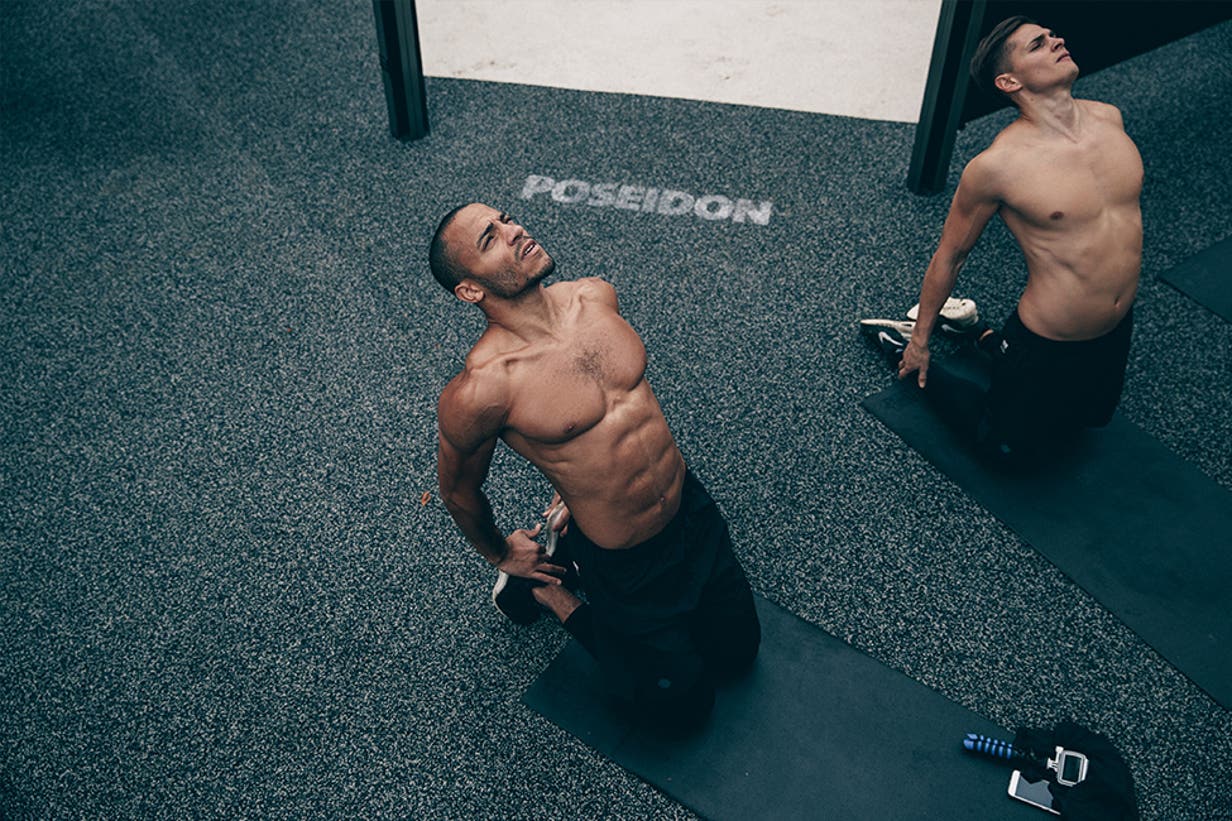3 days after Kentauros, everyone’s asking the same thing: how the hell do I get rid of this muscle pain? Unfortunately, research is still trying to find out the decisive answer to your question. It’s a complex topic of ongoing investigation, but until then we will provide you – and your glutes – with an overview of what’s been uncovered so far to hopefully help ease the pain. Sit tight.
The Repeated Bout Effect
The first cure comes from your body and happens naturally. Think back to when we told you about how muscle soreness occurs and that your body has a protective measure to combat the pain. This measure is what researchers call the Repeated Bout Effect. After performing an eccentric exercise for the first time, for example burpees or squat jumps, you will experience soreness within a certain muscle group. Once this happens, your muscles remember the movement and adapt, therefore reducing further damage and soreness from the same exercise next time it is performed. And not just the same exercise: getting sore legs after a bunch of burpee squat jumps will also prevent you from getting sore legs after your next downhill run since both movement patterns contain some kind of impact. The muscles do this by building more myofibrils, meaning they get bigger and stronger, thereby potentially protecting you from this soreness for up to 6 months.

Stretching: the oldest trick in the book, but also the most effective?
There are so many rumours about the effect stretching has on sore muscles. First things first: if you are experiencing muscle soreness, avoid long stretching sessions. This is simply because stretching can increase the small tears within the muscle, therefore making your muscle soreness even worse. Is this completely new for you? Then there’s a lot more you need to know about stretching and muscle soreness:
Researchers tested the effect of static stretching (SS) on one group and the effect of proprioceptive neuromuscular facilitation (PNF) on another group to find out whether these methods prevent or ease muscle soreness. After 8 weeks of using SS and PNF three times a week, the participants were asked to perform exercises that are known to cause muscle soreness (eccentric exercise-induced muscle damage = EMD). Eventually, both groups were compared to a control group which did not undergo any treatment. The results reveal that participants of both groups (SS and PNF) were able to reduce the muscle damage and to recover faster than the control group. This research shows that stretching doesn’t cure soreness, but speeds up recovery and helps to prevent it.
However, the most important point to take note of here is that flexibility training should be performed regularly and consistently. It is not enough to only start stretching once you begin to feel muscle soreness.
What else can be done to cure the pain?
Since muscle soreness includes the muscle structures being damaged, putting any kind of physical stress on the muscle is counterproductive. Avoid high strength loads and instead take a break and rest for a while.
Applying warmth in the form of a heat pack or warm bath has been shown to loosen cramps and flush out edema. Try taking a hot water bottle to work with you and applying it to the affected area for ten minutes at a time.
Similar to warmth, cold therapy (eg. cool pack) is also said to be very beneficial when it comes to easing soreness. Although research didn’t find any significant results in how much cold therapy treats muscle pain, it is said that cold application eases the subjective perception of pain.
Let’s recap
There is no magic cure for muscle soreness. However, experiencing muscle pain – although it might not feel like it at the time – is good for future prevention as your muscles get stronger and learn how to adapt to the intensity and movement. This is also the reason why advanced athletes suffer less – or not at all – from muscle soreness. Methods like regular stretching – not only when you feel discomfort – as well as cold and heat therapy also show signs of treating muscle pain and lowering pain perception.